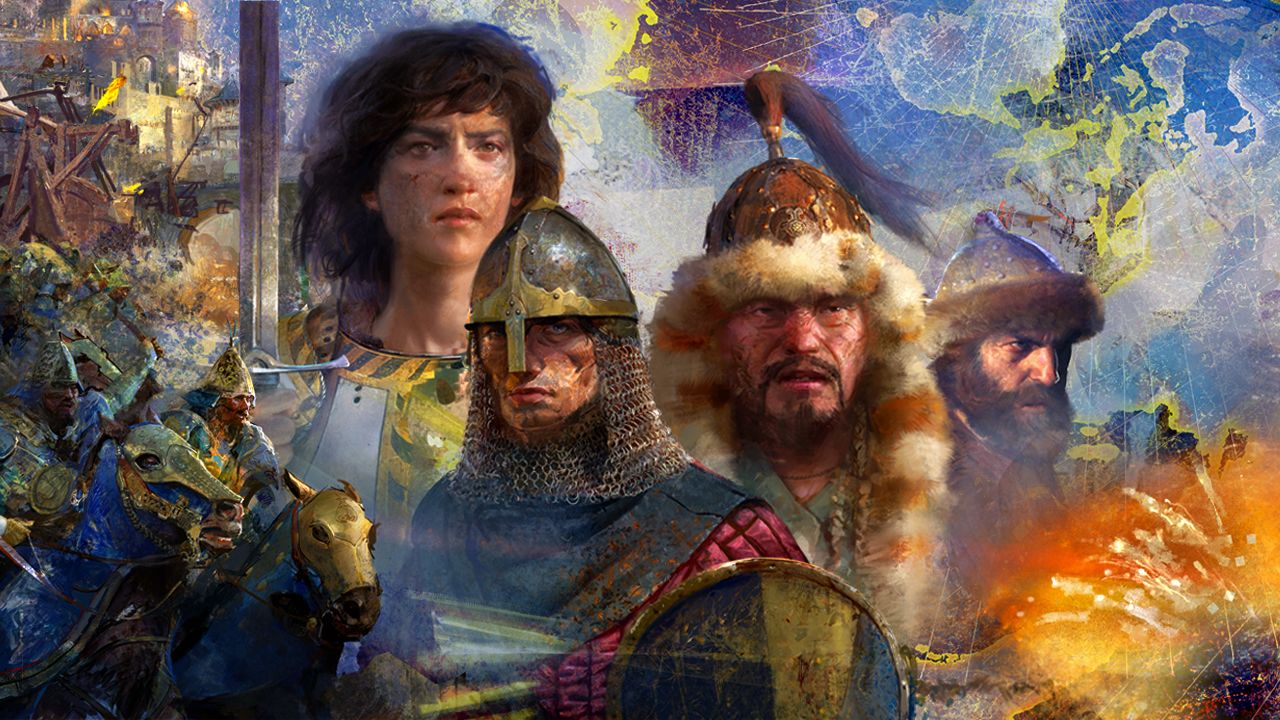Our Verdict
A worthy new entry in the legendary series that’s equal parts progressive and dated.
PC Gamer's got your back
What is it? Historical real-time strategy set in the medieval era.
Expect to pay $60/£50 (or via Xbox Game Pass)
Released October 28, 2021
Developer Relic Entertainment
Publisher Xbox Game Studios
Reviewed on Ryzen 7 5800H, Nvidia GeForce 3070 (mobile), 16GB RAM
Multiplayer? Up to eight players online
Link Official site
On the evidence of its timeless tyranny over the RTS genre, there’s a case to be made that there’s no surpassing Age of Empires 2—now in its ‘Definitive’ form. Its competitive scene is thriving, people are lapping up its ongoing DLCs like bread loaves dished out by a benevolent ruler, and its gorgeous sprites have a cleanliness that 3D graphics just can’t quite seem to match.
So on the one hand, it makes sense that new series developer Relic has decided to loosely model Age of Empires 4 on the beloved second entry. It strips away some of the complexities of Age of Empires 3, returning to that lovely exploration-economy-conquest loop while adding mostly welcome touches of its own. Chief among these are the asymmetrical factions, which will almost certainly elicit screams of bloody imbalance but nonetheless count as the game’s greatest success.
On the other hand, reverence to the past can be restricting, and I can’t help but feel that Age of Empires 4 could have been something more. While I respect Relic’s decision to play things fairly safe, that should result in making what’s already there really shine; polish those mosque minarets and Moscavian onion domes, pump up those population limits, let bodies fly with physics-y abandon upon impact from cannonballs and elephant heads.
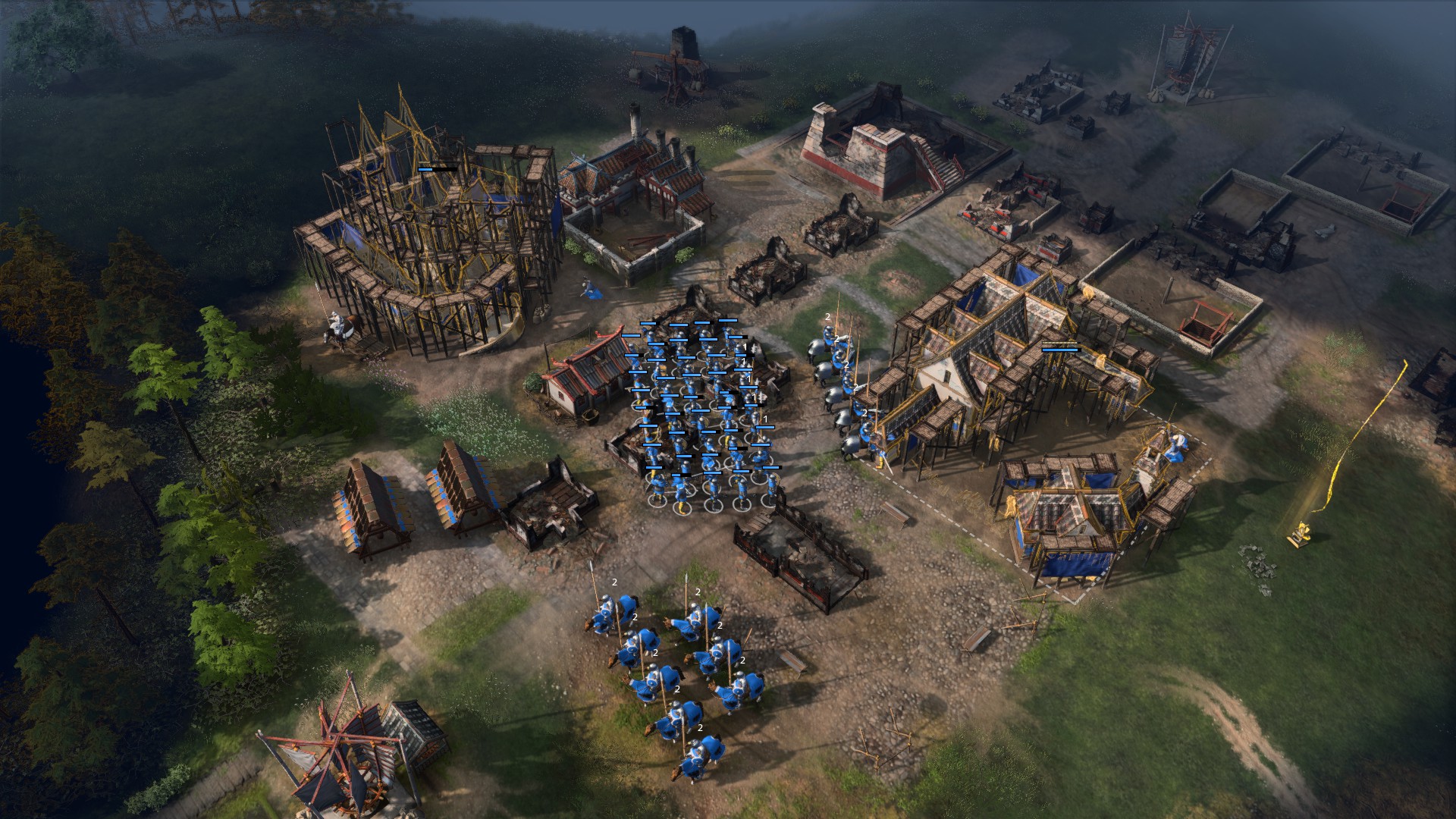
Instead, there’s a staid utilitarianism throughout much of Age of Empires 4—everything in it works much as it ever did, but without the flair that could have made it a grand celebration of that timeless AoE formula.
Those menus make a good first impression though: a triumphant take on the Age of Empires theme explodes in your ears while the golden lines of a medieval world map gleam in the background. Here you have your classic Skirmish mode, of course, as well as four campaigns and a series of Art of War tutorials that time you on various economic and military challenges. Sadly, there are no historical battles, with the several skirmish ‘presets’ feeling like a poor stand-in for a classic series feature.
The campaigns follow the Normans, Mongols, Rus and English across three distinct eras each. Interposed throughout each campaign are crisp documentary-like videos showing footage of significant castles, towns, landscapes and battlefields as they are today, superimposing hundreds of wireframe soldiers over them; the close-up of the Bayeux Tapestry is so detailed that I could practically floss my teeth on its coarse clothy threads.
The documentary style permeates into the campaigns themselves, with most of the stories told through a narrator rather than in-game characters. It kind of keeps you at a distance from Genghis and Kublai Khan, Henry I, Ivan the Terrible and the other movers, shakers and razers of medieval history, which is a tad disappointing given Relic’s history of great RTS storytelling with Dawn of War.
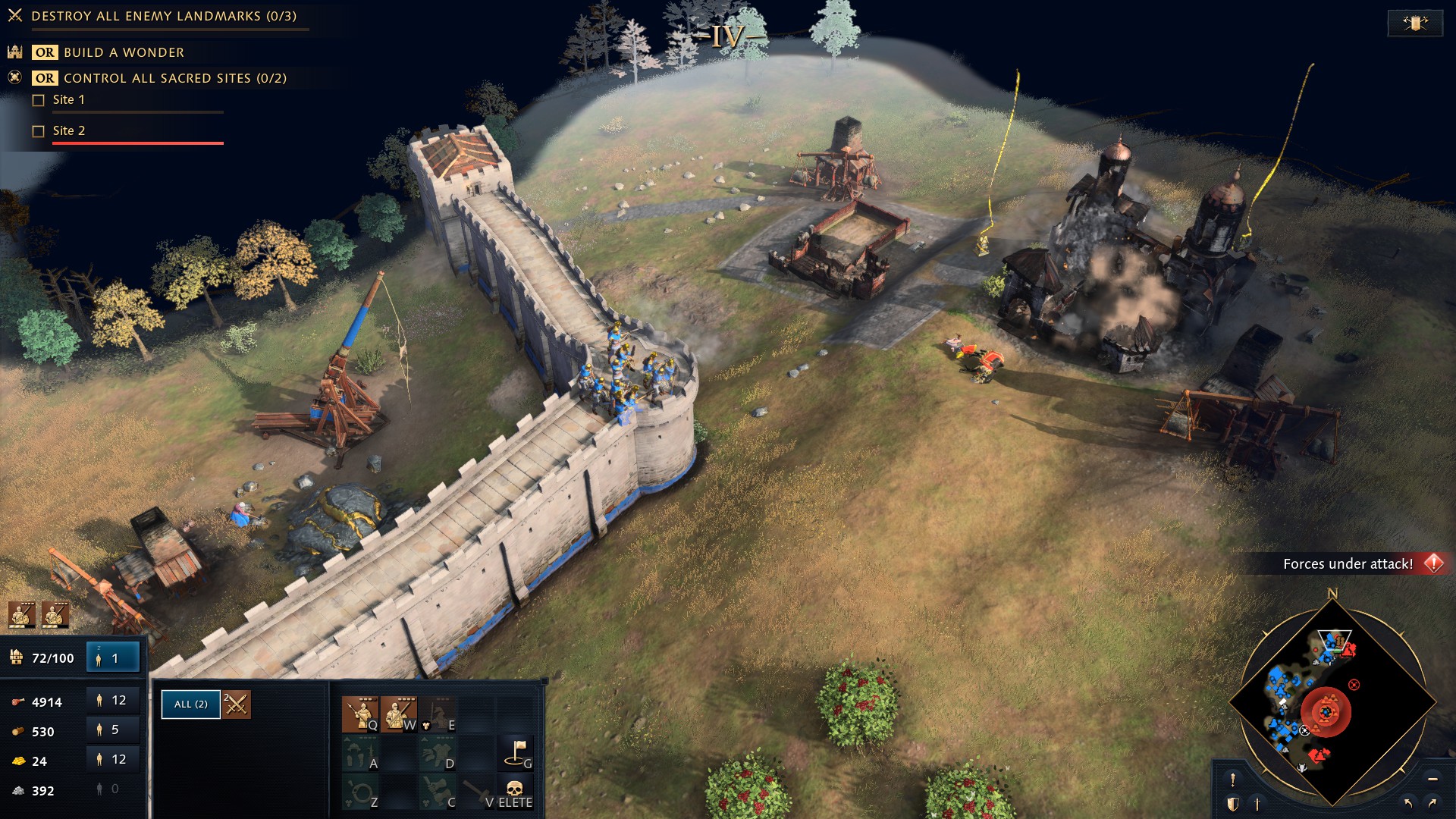
It does also sometimes feel like the squeaky-clean presentation skirts around the ickier parts of history. To chart decades of Mongol conquests without mentioning the centrality of terror and massacre to their strategy, for instance, seems like a bit of a convenient oversight. Regardless, the campaign throws up plenty of great set-pieces; there’s the Battle of Xiangyang to establish Kublai Khan as Emperor of China, Dmitry Donskoy’s power-shifting defeat of the Mongols at Kulikovo, and over in the west the Battle of Bremule to establish England as a regional power. These missions aren’t easy either, and on standard difficulty I found I had to quickly wrap my fingers around the new keyboard shortcuts to keep up with an efficient, nagging enemy.
Damn is it fun to experiment with the different civs and learn their unique ways
But these sleek campaigns are just a foreword to the stories you’ll be crafting on the Skirmish maps with the eight eclectic civs on offer. It’s not a huge number, but the visual and strategic variety between these factions is one of the most significant evolutions in the series.
Age of Empires 4 might not have the balanced esport appeal of AoE 2, but damn is it fun to experiment with the different civs and learn their unique ways. The Mongols are the biggest wildcard, capable of packing entire towns up into carts and relocating to anywhere on the map. I had a real blast with the Delhi Sultanate too, stomping my hapless AI enemies with War Elephants they had no answer for. Delhi’s use of garrisoned scholars instead of resources to research technologies turns the blacksmith into a kind of persistent research lab ticking along in the background while you get on with other stuff. Even the relatively vanilla English have no less than 10 unique traits, in their case focused largely around agriculture and establishing defensive structure networks that grant speed bonuses to your units.
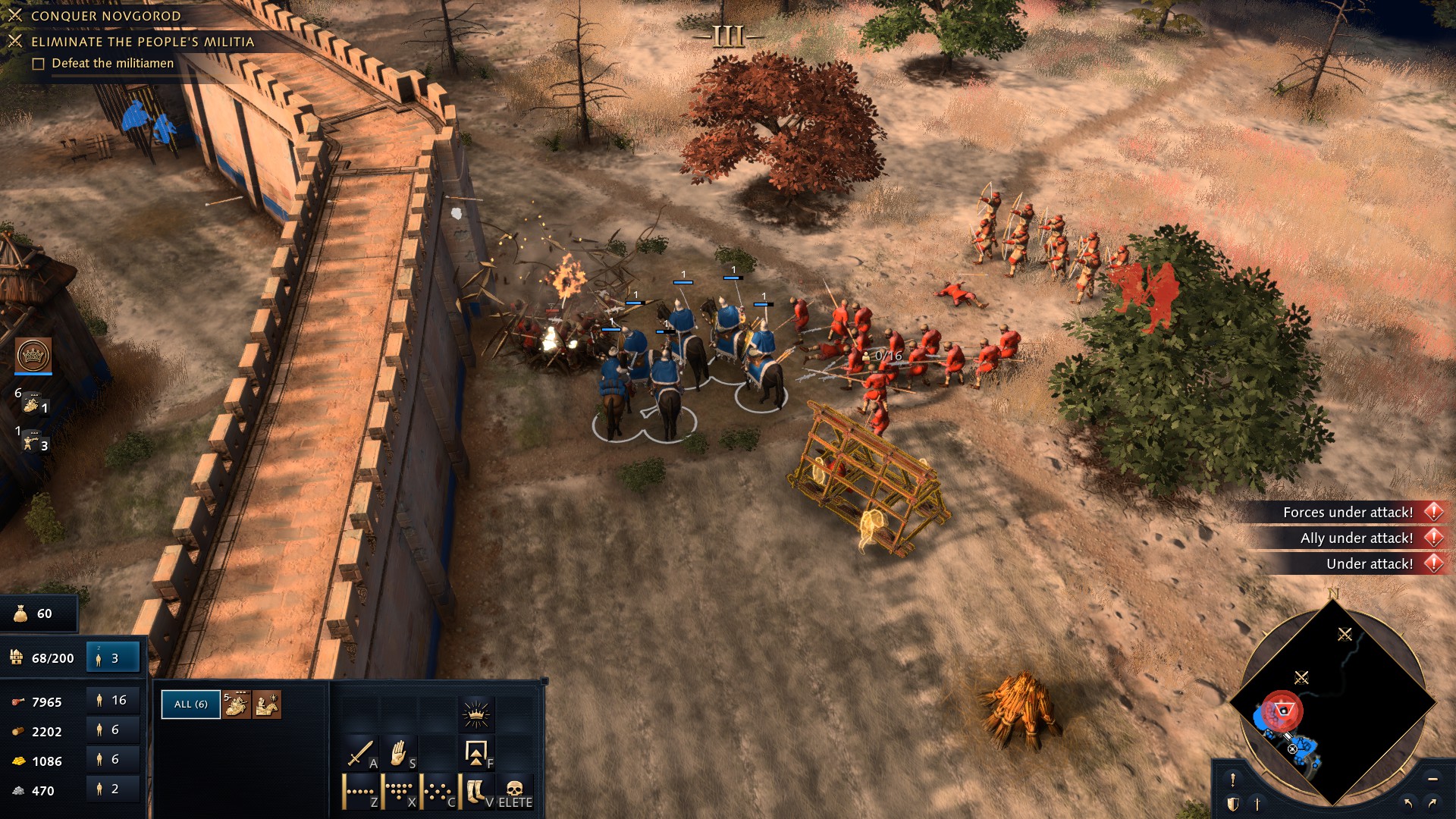
Your strategic path is further refined each time you advance an age, when you get to pick one of two civ-specific landmarks that will advance your empire in different directions. The bulwarky Holy Roman Empire can slam down the Burgrave Palace, for example, capable of producing units in groups of five, while the Rus High Trade House generates its own deer, feeding into the Rus bounty mechanic through which they earn gold by hunting.
A couple of the civs even have their own twists on age advancement. The Abbasids add wings onto their House of Wisdom instead of erecting new landmarks, while the Chinese can build two landmarks per age and found dynasties which will grant you different bonuses for the rest of the game. You can even ‘build tall’, with Abbasids and the Holy Roman Empire gaining bonuses based on buildings you place near their central structures.
While the core mechanics and loops will be familiar, the carefully designed civs and age-advancement choices offer an intricate new web of strategies and approaches to each match. It’s Relic’s bravest evolution of that precious AoE formula, and it really diversifies the game even though wide-scale online play will probably reveal tons of balancing issues over the coming months. But hey, that’s all part of the process in a series where a single title can be improved and iterated over many years.
Upon starting a new game, returning players will immediately settle into the rhythm of resource-gathering, villager spamming, scouting and outrageous forward-settling (particularly effective with the nomadic Mongols). Victory conditions have been smoothed out to keep matches pacey, with military conquest now only requiring you to destroy an enemy’s landmarks, the number of which increases with each age.
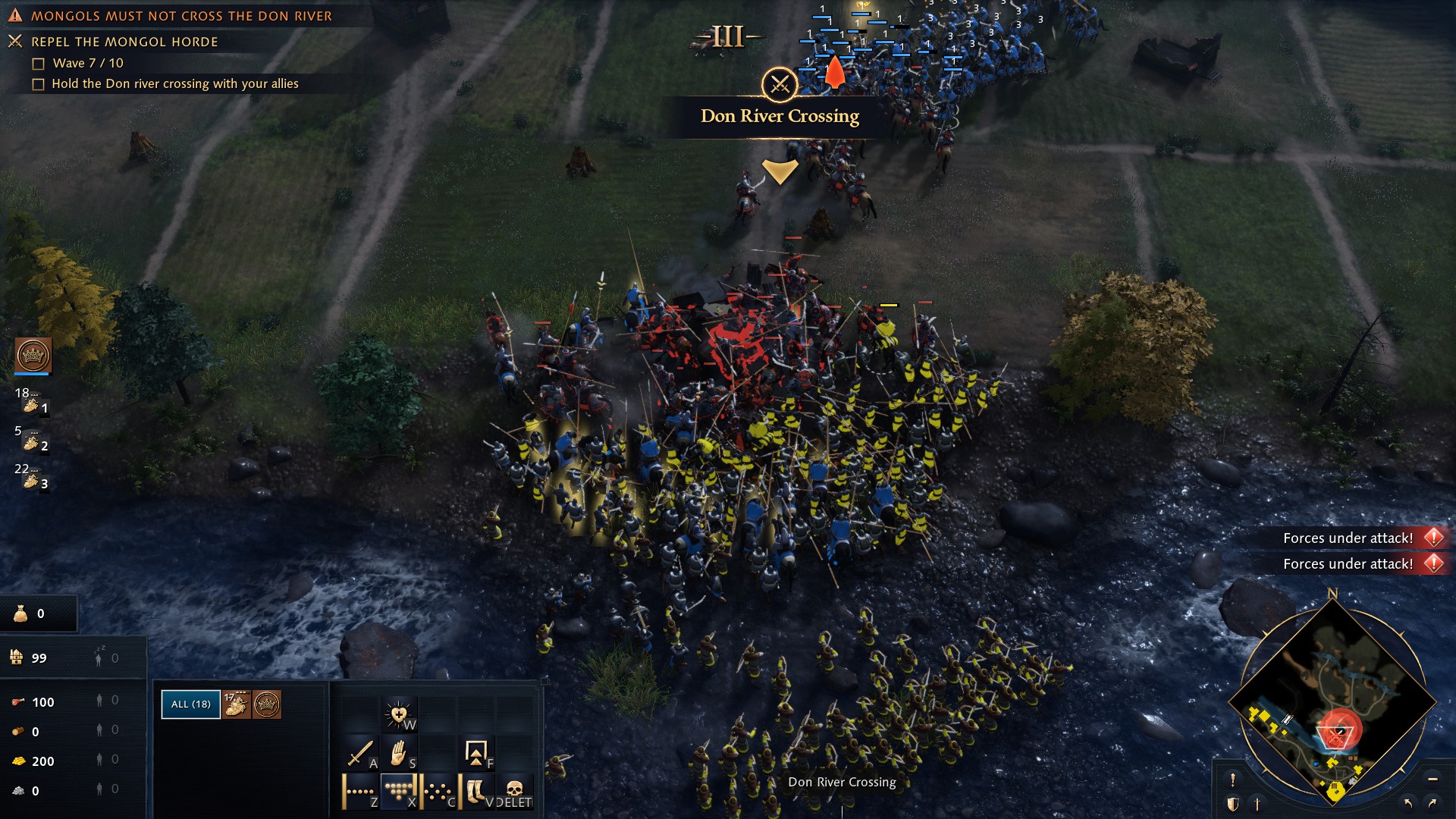
For a religious victory, you can no longer take relics back to the safety of your base, but instead have to hold onto all the Sacred Sites on a map for 10 minutes. Given their central locations on maps, this should encourage more feisty strategies than the sneaky relic-hoarding of AoE past. But all you defensive-minded turtles out there needn’t worry: the Wonder victory—whereby you build a late-game wonder and hold it for 10 minutes—still exists.
Sieges feel much better thanks to the ability of infantry units to create battering rams and siege towers. It does wonders for the pacing that you no longer have to guide your rams and gangly siege towers across an entire map, and it feeds into the freshly scalable stone walls too. Sadly, I’m yet to find the full strategic benefits of siege towers as opposed to smashing walls down with trebuchets from a safe distance. Positioning soldiers on walls defensively, on the other hand, offers increased sightlines, and I shamelessly exploited this against the AI by building stone walls right up in their business, picking off key economic buildings with wall-mounted archers.
Finally, the ability to quickly rotate and position unit groups on an axis is great for battle micromanagement, letting you set up defensive positions or proper army formations more elegantly than before. These aren’t huge changes, but they all help the combat feel that bit cleaner.
Despite a single 30-minute game of Age of Empires ostensibly spanning decades of technological progress, the series has never really evoked the sense of time passing; for all I knew from playing the original AoE, Rome really was built in a day. Age of Empires 4 addresses that dissonance with a few discerning touches. When you plunk down buildings, for instance, you see sped-up wireframe outlines of builders popping up at different points around the construction site—a bit like old stop-motion footage of a skyscraper being erected. Each civ has its own soundtrack too, which mixes in beautifully from the menu music and evolves throughout the ages. They’re little things that increase the grandness of your condensed journey, ironically in a game that actually seems to be a little bit faster than its predecessors.
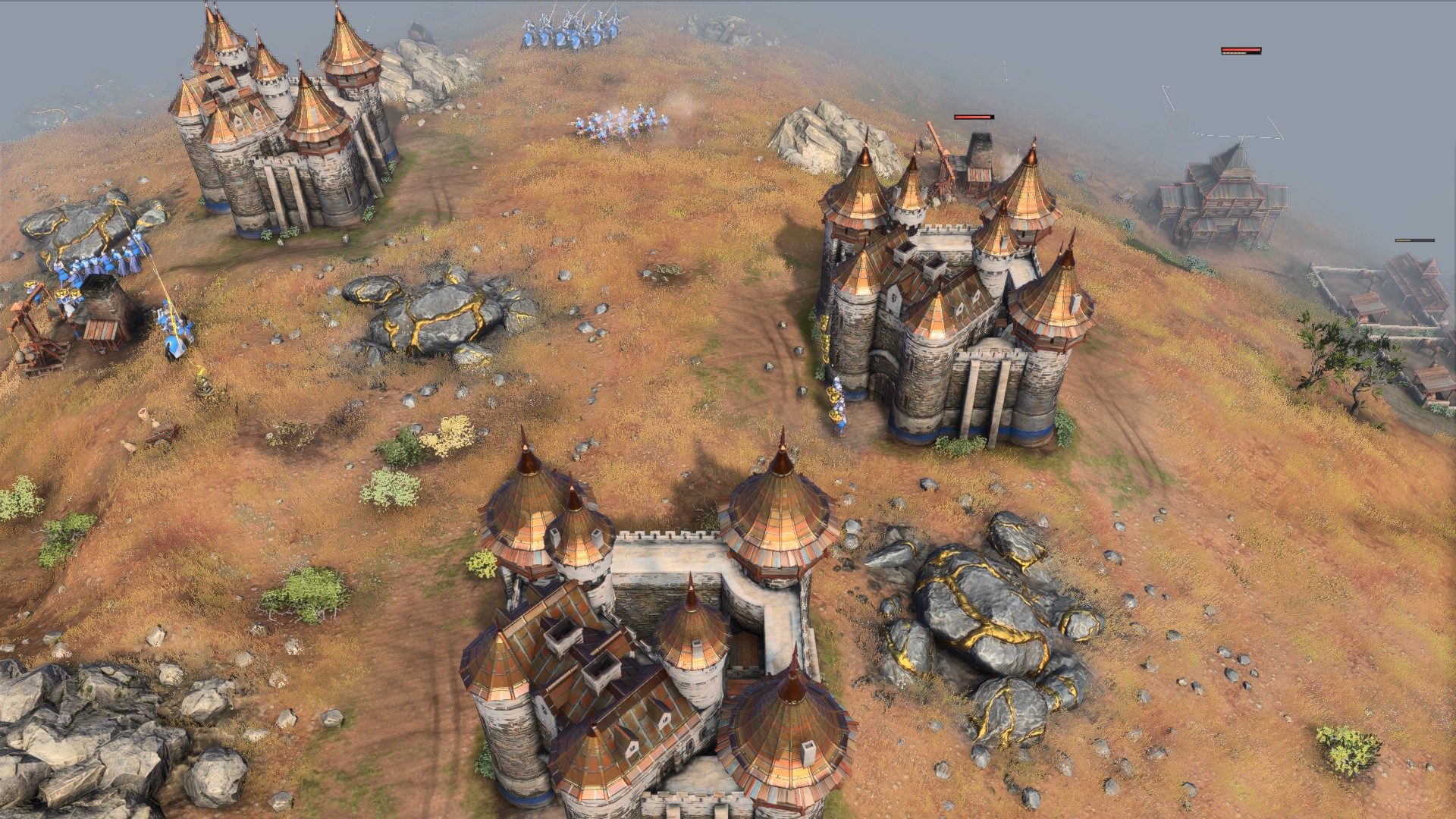
And yet, for every thoughtful tweak and feature there’s an equal and opposite misstep holding Age of Empires 4 back from greatness, because god forbid it outshines the immortal second entry.
Building and ground textures are on the washed-out side (and nope, I won’t accept explanations that this is just part of the game’s more ‘painterly’ art style). Having gone back to Age of Empires 3: Definitive Edition for comparison, I found that not only are textures cleaner there, but the game is more secure about showing them off by letting you zoom in further.
For every thoughtful tweak and feature there’s an equal and opposite misstep holding Age of Empires 4 back from greatness
Speaking of zoom, the combination of high camera angle and limited zoom-out makes for quite a narrow field of view. I’d love to have seen some kind of free camera functionality that lets you admire your town planning and get into the nitty-gritty of battles, or at least the option for a classic isometric perspective.
And battles still feel too polite, as units and cavalry charge each other only to stop just short of collision and start jabbing at each other with their pokey-sticks—it’s kind of alarming that I still have to refer back to 2004’s Battle for Middle-Earth as an example of ‘cavalry collisions done good’. Units in vague proximity to enemy war elephants seem to drop dead, and there’s no dynamism when castle walls fall out from under units or bombards blow troops away. Similarly, keeping population caps to the traditional 200 means that battles never really reach the grand scale the trailers tease you with (unless orchestrated by the campaign).
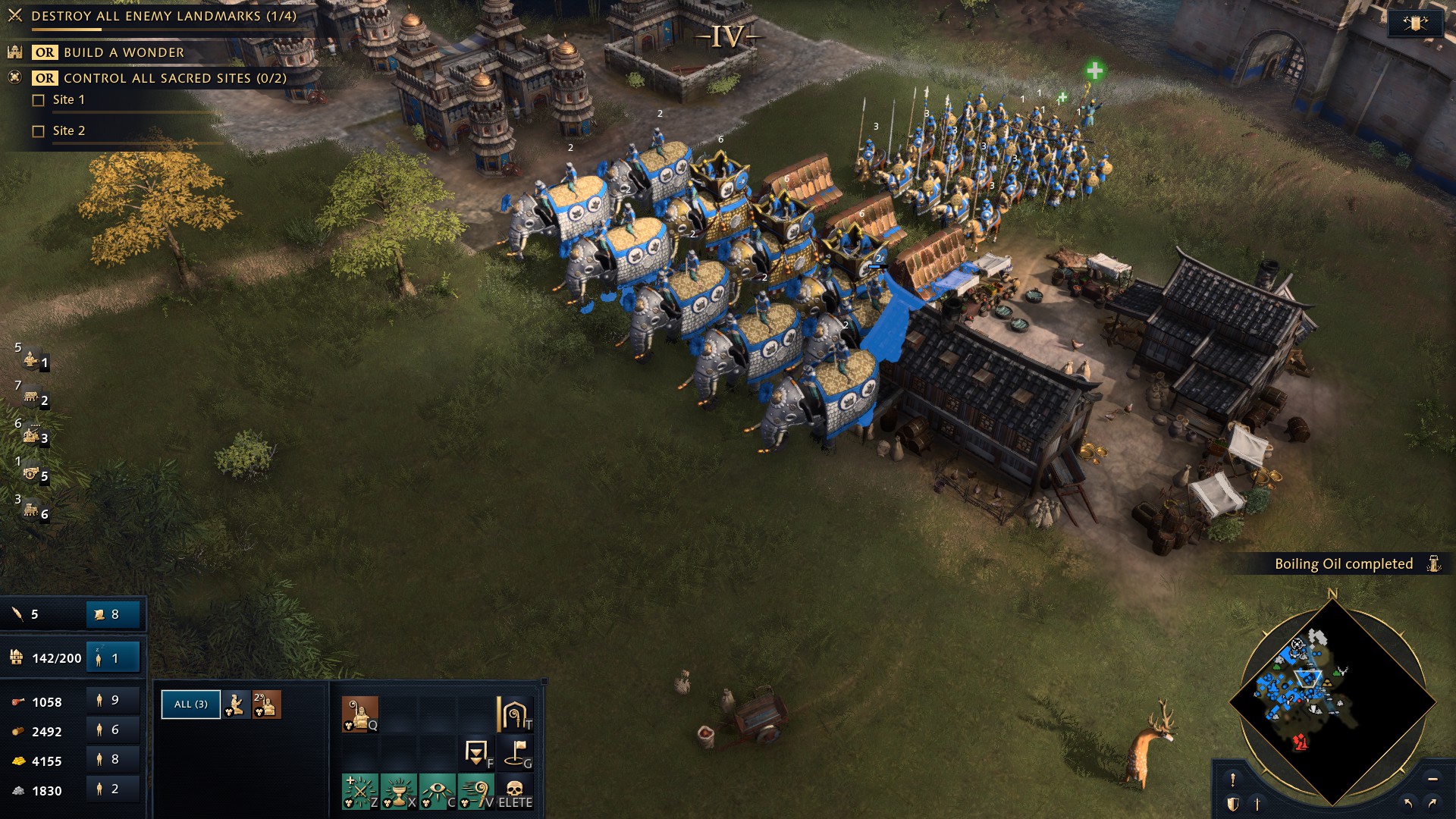
But perhaps what I think of as anachronism others will think of as purism; a game zealously keeping to an excellent formula, right down to its strangely civil combat, and non-existent horse-turning animations that look a bit like a carousel pony rotating loosely on its axis. The fact remains that the strong AoE loop, ever so slightly refined, is as compelling as ever, spruced up by a colourful roster of truly distinct civs. Knowing how unique each faction is makes the inevitable introduction of new ones a tantalising prospect.
Age of Empires 4 has strong foundations to really grow into something, but it comes at a time when Age of Empires 2: Definitive Edition is adding long-desired co-op campaigns and an ever-expanding library of historical battles. By comparison, Age of Empires 4 looks a little content-thin, especially for a £50 game (conversely, it’s an absolutely glorious day one release on Xbox Game Pass).
Relic told us last month that they weren’t looking to steal AoE 2’s player base or place at the top of the series hierarchy, but rather give players an interesting new alternative. In this sense I guess they’ve succeeded, but it feels like with a bit more attention to detail (rather than, say, hours of globe-trotting documentary footage), they could have heralded a new AoE era rather than invoking a past one.
But in a series where a single game can manifest into its best form years, even decades, later, the only thing really standing in the way of Age of Empires 4’s growth is the ongoing success of its predecessors. It offers enough new ideas amidst the sturdy old foundations to rank among them—even if it’s not yet ready to rule.
A worthy new entry in the legendary series that’s equal parts progressive and dated.
Robert is a freelance writer and chronic game tinkerer who spends many hours modding games then not playing them, and hiding behind doors with a shotgun in Hunt: Showdown. Wishes to spend his dying moments on Earth scrolling through his games library on a TV-friendly frontend that unifies all PC game launchers.
